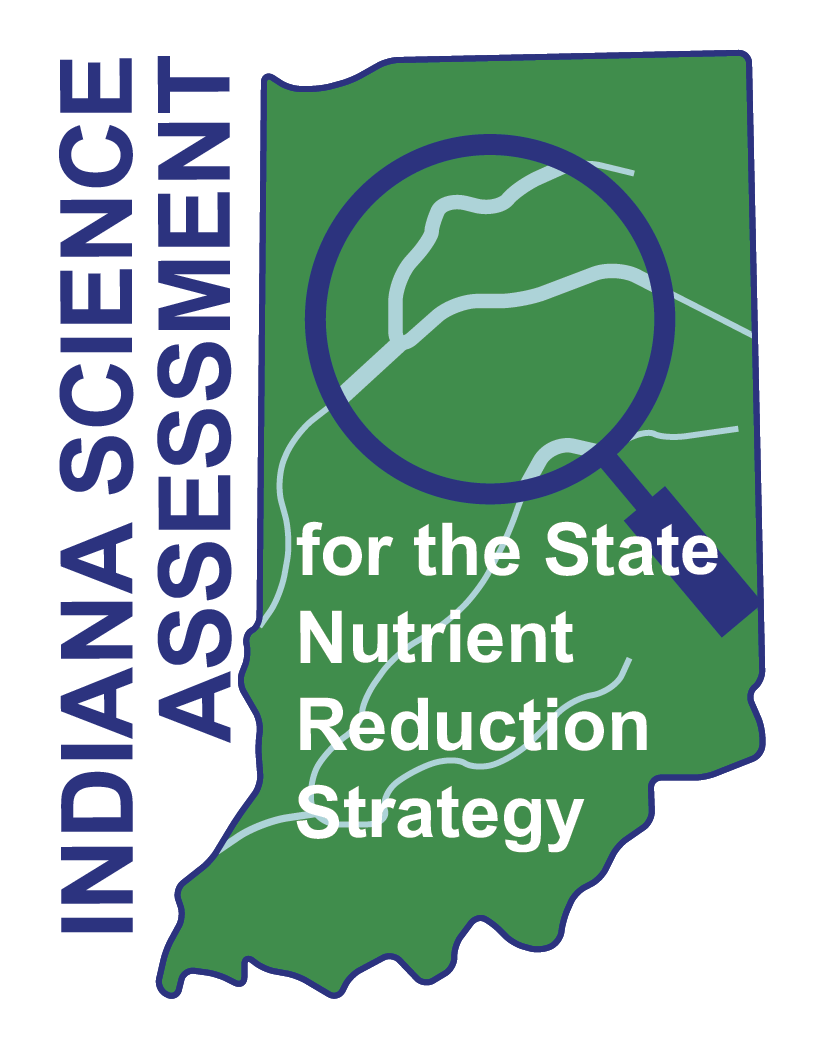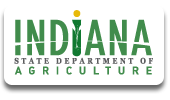
The Indiana Science Assessment was born out of the desire of the Indiana Conservation Partnership (ICP) wanting to improve the process of how nutrient load reductions are determined for best management practices.
The Indiana State Nutrient Reduction Strategy (SNRS) has provided a foundation for nutrient reduction efforts across the Indiana Conservation Partnership (ICP) agencies and others, and has enhanced collaboration in conservation implementation. This collaboration is demonstrated by Indiana’s leadership in sharing conservation practice information among agencies within the ICP, which has allowed results of the SNRS and efforts across agencies to showcase the impacts of conservation practices. However, quantifying the nutrient load reductions and water quality improvement from individual conservation practices is scientifically challenging, and the current Indiana method for determining nutrient load reductions would benefit from using the most recent research and by including more parameters such as dissolved nutrients.
In 2019, a Core Team of representatives from different conservation agencies around the state was formed and worked together to determine the scope of and components needed within the Science Assessment. The Core Team is made up of partners from the Indiana State Department of Agriculture (ISDA), the Indiana Natural Resources Conservation Service (NRCS), the Indiana Chapter of The Nature Conservancy (TNC), the Indiana Agriculture Nutrient Alliance (IANA), the Indiana Department of Environmental Management (IDEM), and the Purdue University College of Agriculture.
Indiana Science Assessment Organizational Chart
To view the full Indiana Science Assessment Strategy that was developed in September of 2019, see Strategy for Development of an Indiana Science Assessment to Support the Indiana State Nutrient Reduction Strategy.
The Indiana Science Assessment addresses two critical needs to move the State Nutrient Reduction Strategy forward:
- Component 1: Determine historic and ongoing nutrients loads leaving the state, and also by watershed basins used in the State Nutrient Reduction Strategy.
- Component 2: Improve method to quantify nutrient reductions from conservation practices, including dissolved nutrients, and determine efficiency of practices in reducing loads.
Component 1
Through Component 1 of the Indiana Science Assessment, water quality monitoring data from the Indiana Department of Environmental Management’s (IDEM) Fixed Station Network and the United States Geological Survey’s (USGS) stream gage network is collected at key locations along the state borders and within each major river basin in the state. Data is analyzed and run through the USGS Weighted Regressions on Time, Discharge, and Season (WRTDS) model to determine water quality trends of nitrogen and phosphorus loads and concentrations. Analyzing water quality monitoring information to determine loading and trends within each of the basins in the state will further help in prioritizing watersheds for more targeted conservation efforts in the future. Component 1 is led by the Indiana State Department of Agriculture, with assistance by members of the Core Team and the USGS.
To view the report on the results of this analysis, see Trends of Sediment and Nutrient Loads in Indiana Watersheds.
ISDA is making the results of the water quality trends report available to the public and partners through a web-based tool. This tool visualizes data and water quality trends for nitrogen, phosphorus, and sediment loads (also known as flux) for Indiana’s major river basins.
View the tool below or click here to open the tool in a new tab.
Component 2
Component 2 of the Indiana Science Assessment focuses on improving the existing method used by the Indiana Conservation Partnership (ICP) to calculate and quantify sediment, nitrogen and phosphorus load reductions from implemented conservation practices, and to identify and list the efficiency of in-field and edge-of-field practices in reducing nutrient loads from agricultural sources to water. Drawing from available science that can apply to Indiana cropland, this will allow for more consistent communication of the value of practices to those involved in implementation, as well as uncover knowledge gaps that need to be addressed with future research.
Component 2 is funded by an EPA grant that is supplied to the state to support efforts within the Indiana State Nutrient Reduction Strategy. A Research Associate is working at Purdue to conduct data analysis and research with the goal of identifying and/or developing a standard tool and procedures for estimating nutrient load reductions from conservation practices on the landscape, and be used in determining the percent efficiency of certain conservation practices on reducing the nitrogen and phosphorus loads.
A Science Committee of researchers and experts from five academic institutions in Indiana and two federal sciences agencies (USDA-ARS and USGS) who conduct research related to nutrients and water quality in Indiana was formed to provide guidance on the data analysis and practice criteria, as well as provide scientific input and evaluation of the process. Science Committee Members
To view the EPA Grant Work plan on how Component 2 will be carried out, see Work Plan on Development of an Indiana Science Assessment to Support the Indiana State Nutrient Reduction Strategy.
- To view the Year 1 Progress Report for Component 2 of the Science Assessment, see Progress Report for Year 1.
- To view the Year 2 Progress Report for Component 2 of the Science Assessment, see Progress Report for Year 2.
The Indiana Science Assessment Core Team also developed a document providing the definitions of the initial ten conservation practices and criteria assessed in phase 1 of the Science Assessment. See Guide to Conservation Practice Definitions for Indiana Science Assessment – Version 1. Definitions of other conservation practices will be available in future editions of this guide as practices are added to the Indiana Science Assessment process.
Benefits of the Indiana Science Assessment
The Science Assessment will lead to:
- Improved documentation showcasing statewide progress towards nutrient reduction goals
- Prioritization of the most effective conservation practices based on Indiana conditions, to improve program implementation
- More accurate assessment of Indiana’s contributions to downstream water quality issues
- Alignment of communication by researchers, agencies, and others throughout Indiana about conservation practices effectiveness
- Enhanced transparency and accuracy for Indiana’s water quality improvement quantifications
- A bolstered set of reportable goal-tracking parameters that includes dissolved nutrients
- A scientifically sound understanding of the nature of nutrient loading in Indiana waterways
- Determining the scale of conservation needed by running a series of scenarios based on economic feasibility and on load reductions needed to reach a certain reduction goal.
